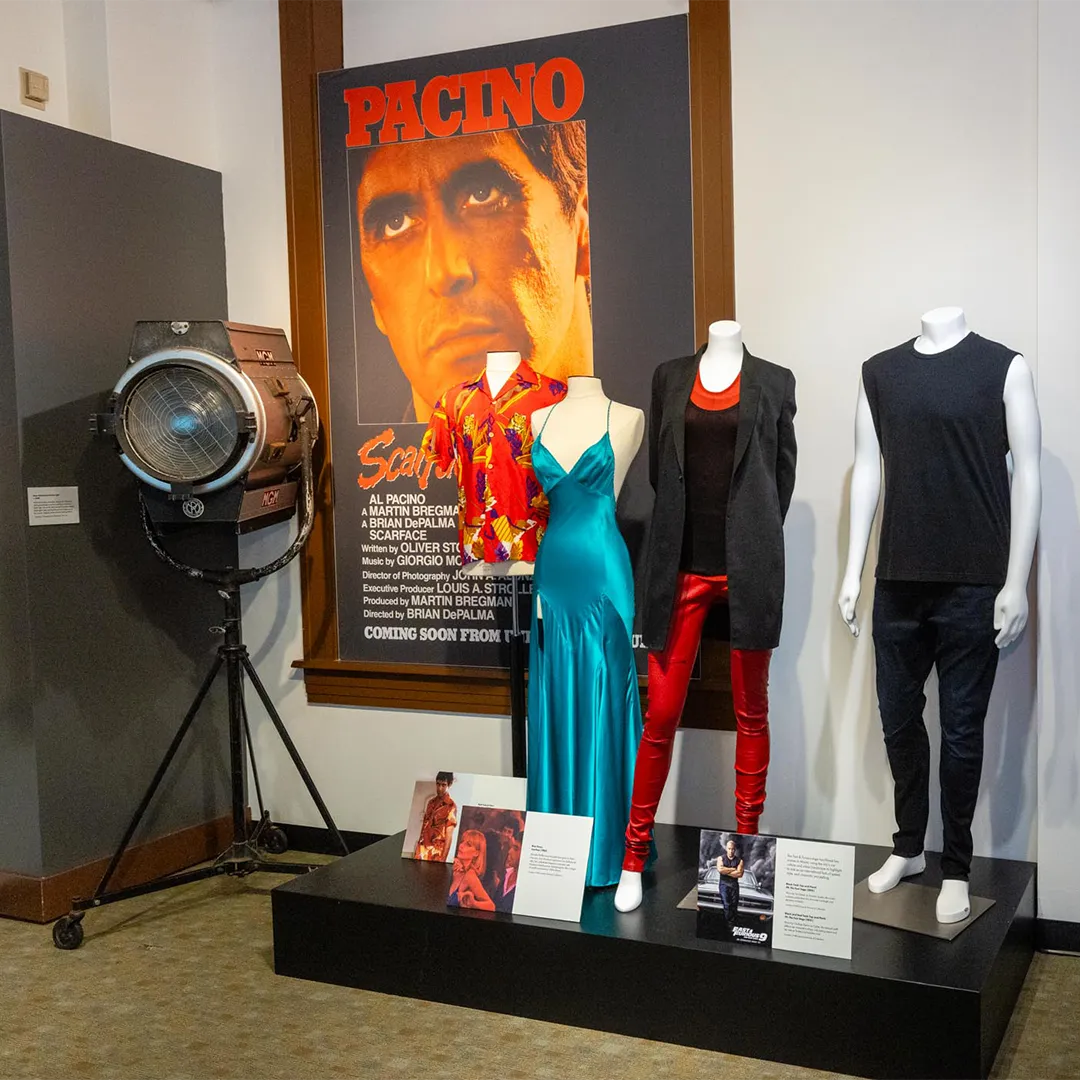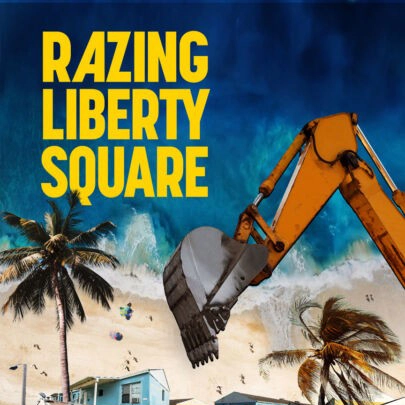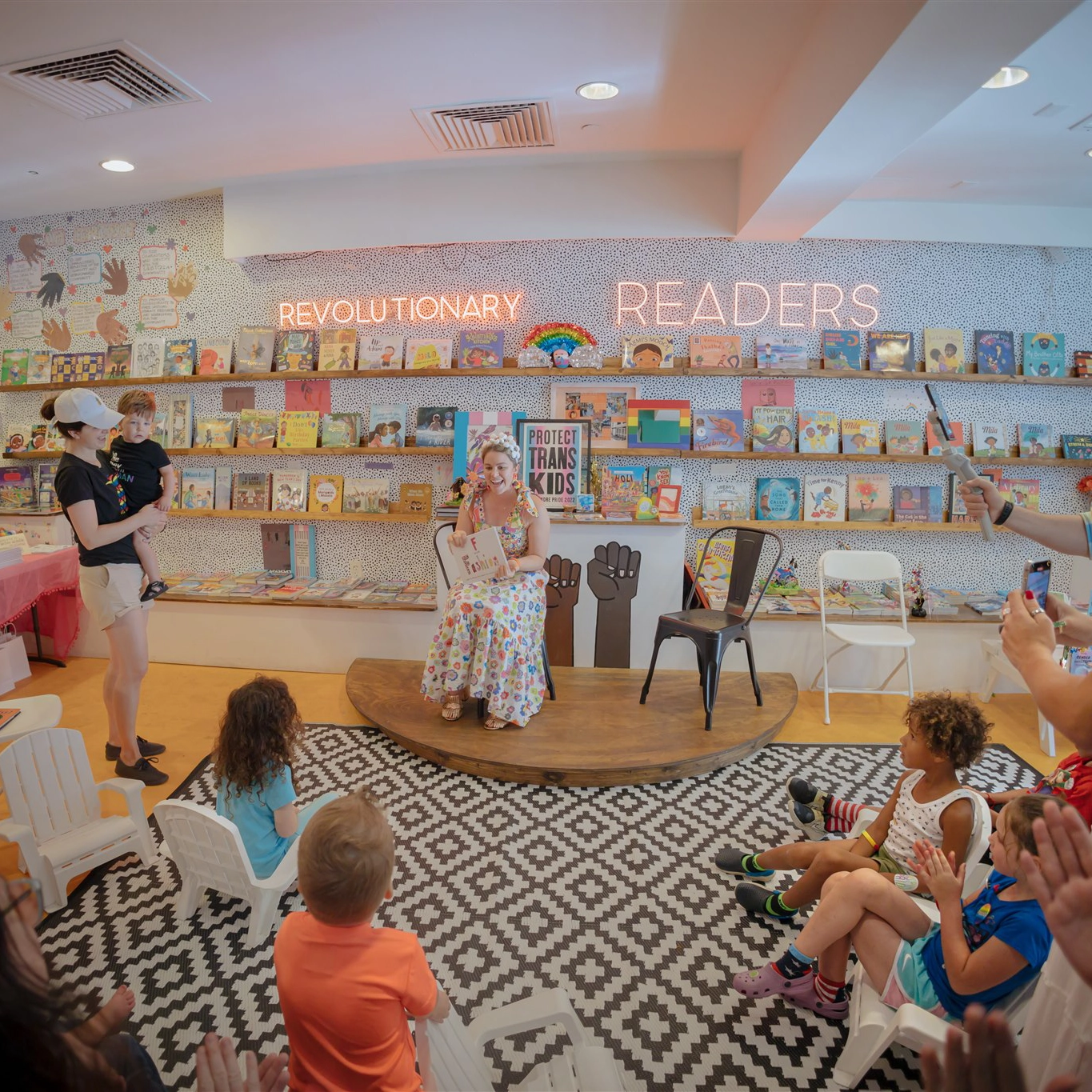by | February 24, 2016
Scarface Revisited
A writer in search of modern meaning in Miami’s iconic film, finds himself in a cloud of Cuban cigar smoke and political discourse
It was hard to believe this was the right place. I stood in front of Johnny Rockets, a 50s-themed burger franchise, on 728 Ocean Drive in Miami’s South Beach with my friend, Carlos Enrique de Castro. Tourists sat in red vinyl booths with aquarium-sized frozen cocktails before them while Alice Cooper’s No More Mr. Nice Guy blared on the speakers overhead. Carlos and I were not interested in greasy food and overpriced alcohol. We were looking for the location where Tony Montana escaped death by chainsaw and shot a man in the street in Brian De Palma’s 1983 gangster epic Scarface, but we saw no sign of the film.
Then a group of men and women walked down the stairs from the building’s left side. They gleefully did their best Pacino impressions—‘‘Say hello to my little friend!”
“It’s upstairs?” I asked. “The Scarface site?”
“That’s right, you little cock-a-roaches,” one of them responded.
Carlos and I ran up the stairs. The film had shaped our image of Miami. I’d seen the cult classic film many times over the years, and I could not think of the city or the movie without merging the two together. When I think of Miami I think of Scarface; when I see Scarface, I think of Miami. Carlos first saw the movie in black and white on a bootlegged VHS in Havana when he was 15 years old. Little did he know then that a decade later he would follow in Montana’s proverbial footsteps. He is 27 now, living in Miami after a five-year emigration ordeal that included an escape from a Greek mob boss in Nassau and a $7,000 boat ride from Bimini to a posh port and U.S. residence in Miami.
I first met Carlos when he was in hiding on a small island in the Bahamas a few years ago. Carlos is athletic and has thick, arched eyebrows that give him a look of constant excitement. We became fast friends, and he encouraged me to visit Havana. So I did and ended up staying with his mother for about a month. Carlos and I have remained close ever since.
I had traveled to Miami from my home in Sarasota in search of the iconic film site. I invited Carlos because of his personal interest in the film, and because I wanted to see him. I also wanted to know how he felt about the movie considering its parallels with his own life. We reached the top of the three-story staircase.
“This is it?” Carlos asked.
There was no official plaque and the door was sealed with two two-by-fours to keep sightseers out. But this was it. We weren’t the first to make the pilgrimage. All over the wall outside the apartment people had left their signatures in red, blue and black Sharpie ink. Couples promised themselves to each other ‘‘4eva’’ and one visitor had written ‘‘PACINO ES DIOS.’’
“They should have a museum. I can’t believe this is all,” Carlos said through his thick, Cuban accent.
We walked down the stairs and back onto South Beach’s Ocean Drive, a narrow boulevard lined with palm trees and parking meters that runs between Miami’s Art Deco district and Atlantic shoreline.
I couldn’t help but be disappointed. We imagine places we’ve never been through popular films. In the case of Miami, movies and TV shows like Miami Vice, Cocaine Cowboys and Narcos have portrayed the city and its South Beach district as a dangerous but glamorous crossroads for the cultures and crimes of the northern and southern hemispheres. But it is Scarface that has been the iconic symbol of the city for the past three decades. From Tony Montana’s white suits and gaudy silk shirts to decadent waterfront property, the film embodied the sun-soaked luxury of 1980s Miami and introduced the tropical metropolis to the world. Scarface, like all gangster stories, appealed to the anti-authoritarian fantasists in all of us. Though he was a blood-soaked criminal fueled by cocaine, Montana, the underdog, made his way in the world on his own terms—a variation on the American dream.
“Are there any other places where we can see Scarface stuff?” Carlos asked. I did not know, so I suggested we go next door to the Beacon Hotel, a beautiful, white Art Deco building with blue trim, which peripherally featured in the film. Tourists with rolling luggage waited inside the hotel lobby. On the wall next to the reception desk, I found a tribute to the legendary movie: a small, framed poster with two unused bullets underneath a picture of a bloodied Al Pacino. The concierge, a large man, wearing a white uniform that had the same blue trim as the hotel building, approached and asked if he could be of any assistance. I told him we were looking for Scarface history. He rolled his eyes. He gets the question a lot.
“There’s only the place next door. That’s it,” he said and then let us be.
The only other evidence of Scarface was at a kitschy beach shop that sold all kinds of plastic paraphernalia. We passed towels and T-shirts bearing Pacino’s unlicensed grimace surrounded by wads of cash and smoking guns. Carlos asked if I wanted to talk to other Cuban immigrants about the movie. I figured we weren’t going to find vestiges of Scarface in South Beach-—nowadays, the only danger here comes from tourists who have had one too many mojitos. So we drove 10 miles west to Little Havana.
We ended up at Guantanamera Cigars on Eighth Street where 10 Cuban immigrants smoked cigars and drank café Cubano with a splash of rum. The owner, José Montagne, who emigrated from Cuba in the late 1980s, invited us to sit and smoke. He was as white as me, had sharp blue eyes and wore a tight shirt that showed off his biceps. I told José that we were looking for Scarface stuff and wondered why there wasn’t more evidence of the movie in Miami. José was more interested in talking politics.
“What do you think of Che Guevara?” he asked me. “Do you know he killed 50,000 in El Morro [the Spanish castle guarding the north of Havana], up against the wall!” José increased the number to 100,000 a few minutes later. Then he held up his smart phone.
“This,” he said, “this is liberty.”
The conversation went back and forth between Spanish and English for a while longer and the topic never changed from the evils of Fidel.
“Ah, I almost forgot, you wanted to know about Scarface,” José said.
José brought us to the store’s tabaquero, or cigar roller, who showed me his ankle monitor and requested anonymity. He was a large, Miami-born Cuban. I asked him about the movie.
“Things are different now. The marimberos [Cuban slang for drug dealers] are still around, but they’re smarter now, not so violent. For better or worse, that whole era, all that cocaine, made Miami the party capital of the world.” He poured me a café.
“You know,” he said, “they filmed the whole thing in Los Angeles—everything except that one scene on Ocean Drive.”
I’d learn that it was true—Scarface was filmed almost entirely in the Los Angeles area. This was because of the political climate of the time. In 1980, three years before Scarface was released, the Mariel boatlift hit Miami. Confronted with economic depression and civilian unrest, Fidel Castro had opened the Port of Mariel to those who wanted to leave the country for the United States. To spite the U.S. government (which had granted asylum to many of Cuba’s educated elites in the 1960s), he also sent over his country’s convicts and mental patients. More than 125,000 Cubans arrived in Florida over a period of six months. By 1981, Miami had become the murder capital of the world. While only a small percentage of the Mariel immigrants, or Marielistas, were involved in criminal activity, the rise in drug-related crime became associated with the Cuban exile community and inspired Oliver Stone’s script for Scarface, a modern reinterpretation of Howard Hughes’ 1932 film, which portrayed Tony Montana as one of those Marielistas.
When Miami officials learned that Hollywood wanted to make a gangster film about the Cuban exiles, they protested. The commissioner of the city of Miami, Demetrio Perez Jr., on behalf of his Cuban-American constituents, demanded that the script be rewritten. Rather than Stone’s Mariel refugee, they wanted Tony Montana to be a spy.
Ironically, the protest forced producer Martin Bregman to abandon Miami, and he moved the production to Los Angeles. The only scene filmed in Miami was the one with the chain saw.
“It’s obvious to me that they are afraid I am going to depict the Cuban community as a bunch of animals,” Bregman told the Miami Herald. “Believe me, this is not going to give Miami or that area a bad image. It already has that image.”
Today, that image of danger no longer fits, and the Cuban community seems indifferent to the film’s popularity. Outside the cigar shop, I asked the group, all of them Cuban immigrants, if they thought the movie made their people look bad. The answer was a unanimous shrug.
“What is embarrassing,” one man said, “is that President Obama wants to be friends with the Castros.”
Everyone but Carlos agreed loudly. He managed to avoid the political conversations. Rather, he talked to all the other immigrants about which neighborhoods in Havana they had grown up in. One man, a large mixed-race fellow with a bald head, had grown up several blocks away from Carlos’s mother’s apartment. Despite the absence of Tony Montana in Miami today, especially amongst the Cuban population, Carlos still had room for the film in his heart.
“It was inspiring, you know?” Carlos said. “A Cubano, our little man in the middle of the world, living the American dream. It made me want to leave, to make a better life for myself.”
“But what about all the violence and greed?” I asked.
“Yeah, that’s not good. But, if I had stayed in Havana, I would just be wasting my time.”
Today, Carlos works at a nice restaurant, a job that pays for his rent and allowed him to buy a new Mazda with cash. He DJs on the side. He has big plans. He’s saving up to buy a place in Miami and a place in the Bahamas. And when the law allows it, he’s going to buy his mom’s apartment in Havana and rent it out to tourists.
“And no matter what, I know I am going to make it. I have to,” Carlos said smiling. “You know, I’m kind of like the Tony Montana of my generation.”
(illustration by Jack Spellman)





